INTERVIEW BY DIBI FLETCHER
INTRODUCTION BY DIBI FLETCHER
PHOTOS BY DJ STRUNTZ
Soft spoken, courteous and passionately interested in all aspects of surfing… That’s the impression I got after the first few minutes of being ushered into Evan Slater’s office where he has been editor in chief of Surfing Magazine since 2001. Even though I’d been a tenant in the same building during his reign, I really hadn’t spent much time in his presence and I feel very fortunate that this interview changed that. Most people in the “surf” world are either the extreme athletes, or the industry type that surf a little. Evan is the exception. With impressive big wave riding credentials and the responsibility for completely revamping what he casually referred to as a thinly veiled sports rag, he clearly loves what he does and it shows. There’s always a juggling act between the art and commerce of surfing, but Evan seems to do it well and has garnered great respect from the surfing community in general and Big Wave riders in particular.
“THE GREATEST THING ABOUT BEING A SURFER IS THAT YOU HAVE HOPE EVERY SINGLE DAY. YOU CAN WAKE UP EVERY MORNING AND HAVE THAT PROMISE OF GETTING A FANTASTIC WAVE THAT WILL MAKE YOUR DAY. I DON’T THINK THERE ARE A LOT OF SPORTS THAT ARE COMPARABLE TO THAT. IT’S INCREDIBLE.”
How long have you been the editor in chief of Surfing magazine?
I started in May of 2001. I’ve been here for seven years now.
And you were at Surfer magazine before that?
Yeah, from 1996 to 2000, I was at Surfer.
In what capacity?
I started out as an associate editor and then moved up to managing editor. I was the editor for the last 12 months. Then the Internet boom happened, and my former boss, Steve Hawk, scooped me up and took me to Swell.com. I rode that one out for about 18 months until it broke into a bunch of different pieces. That was Swell.com/Surfline.com. We built that whole site. It was the salt mines. It was fun.
Do you think you learned a different skill doing that versus doing a print magazine?
Absolutely. I don’t regret the decision. We were building a surfing website from scratch. When the whole surf website thing was non-existent, we set out to build the ultimate surf website. I learned a ton about the digital world, and also, after that, how to make it work for the magazine and coexist with the print version. I had a whole new awareness and respect for the digital world.
Is the website world really different from the print world?
Yes. I think the websites are for news, while the print magazines are to enlighten and entertain. You have to do the quick, real-time news stuff on the website along with photos and videos that under that category. At the same time, the print magazine has to be a different vehicle to really amplify things. You pick the few things that are going to last with people forever, versus the throwaway stuff you put on the website constantly.
Do you consider yourself a surfer that writes or vice versa?
[Laughs.] I would say that I’m a surfer first and a writer second. I evolved into a writer. I’ve always been interested in writing, but I really didn’t truly learn to write until I got to Surfer magazine. I wrote papers all through college, but I cringe at the sight of my old college papers today. Steve was a fantastic editor, as far as teaching me how to write. The whole reason for joining that magazine was to be able to keep surfing everyday and having my life revolve around surfing. At the time, it wasn’t easy to make a living as a big wave surfer.
Do you think your perception of yourself as a surfer first and a writer second will change as you mature?
No, I don’t think so. From the moment I first stood up on a boogie board when I was seven years old, it was the best feeling in the world. I don’t have so much pride that as my skills deteriorate I’m going to quit. Even if I catch the best wave of my life, I’ll still have that drive to be in the ocean, because it makes me feel good.
Do you think that big wave surfing lends itself to being more of a waterman than surfing something under ten feet?
I think it can, for sure. I think it’s important that it does. There’s a larger part to it than just going out and riding big waves. There are guys out there like Mark Healy, Greg Long, James Sterling that try to make it a wider lifestyle than just chasing down swells and riding waves. The diving aspect and the ocean swims appeal to me. Living around the ocean and living off the ocean, there’s so much more to it than just riding waves.
How much do you think the “Spicoli” image of the surfer still exists in the eyes of the public?
It’s funny you say that. In the last issue, tying in with the presidential elections, we were trying to point out that the surfers are still pretty low on the totem pole of power and having a voice in the mainstream. I think part of that is because the “Spicoli” image does pervade among the average person that doesn’t know much about surfing.
I think it’s still pervasive. When I tell people that I’m in the surf industry, it’s like they want to pat me on the head and say, “Oh, that’s nice.” I think, “Well, gee, how dumb are these guys? They get paid to travel the world and do something they enjoy. It’s a huge industry and there’s so much involved.”
That’s true. I agree.
What do you think is your greatest challenge at Surfing?
It’s a challenge to keep it fresh every single month, especially after doing magazines for 12 years. I wouldn’t be able to stay if I didn’t feel like we were moving the ball forward every month in some way. My challenge and goal every month is to make readers feel like they’re getting a new great chapter of surfing and we’re not just repeating ourselves by going to Indo again for the nine billionth time.
What gives you your greatest satisfaction when a new issue comes out?
When you get it in your hand, after you’ve put your heart and soul into it for a month and it comes out looking like a brand new magazine that you haven’t seen before, those are the ones that you know are special. It feels fresh and exciting even to you the person that pored over every single page.
What do you hope to be your legacy to surfing?
I’d like to think that I brought a lot of surfers together and united them and made more people feel included in the sport. I wanted to make sure that people understood the etiquette and the underlying codes of surfing. It’s bringing everyone in and educating them at the same time and showing them what a great sport it is and inspiring them.
Who shapes your boards?
I get surfboards from a lot of different people. My big wave boards are from Stretch right now. He’s fantastic. 126 Juice
How closely do you work together?
I give him quite a bit of feedback. A lot of these guys are going through tons of boards. I’ve been holding on to a couple of boards that I’ve had for a couple of years. With each new board that I get, I give him a lot of feedback, but I’m not in the shaping room with him on a regular basis going over every board, because I’m just not getting the quivers that a lot of the big wave guys are.
Do you experiment with designs and materials?
I always try to keep an open mind. If there’s any new technology or things that people are raving about, I’ll make a point to try it. From riding quads in big waves, which a few years ago I couldn’t fathom doing, to riding all sorts of big wave boards in huge surf. It’s been cool to try all this new stuff out.
Are your boards shaped for the waves or for your style?
I think for big waves, it’s shaped for catching the waves more than anything. I have little specifics that I like such as having a lot of foam up front. It helps catching waves. That’s all I’m concerned about. I want a board that paddles really well so I can get in there early.
How big do the waves have to be for you to consider it “big wave” riding?
Well, I think when I’m on any gun above 9 feet that’s truly big wave riding where you’re surviving drops.
So it’s more about which board you pick to ride?
Yeah, if I feel like I have to pull out the 9’0” or the 9’6”, that’s big wave riding.
Where is the biggest surf you’ve ever pulled into?
That would have to be Mavericks. I started surfing there in ’93, and I’ve had some big days there through the years. The biggest wave that I’ve ever caught there was in ’94 when we had all those big swells. Mark Foo died there that week. There were a few amazing days and I probably caught the biggest waves of my life then.
What do you consider your greatest personal challenge in big wave riding?
Mind over matter, I guess. I think that’s the biggest one. No matter how accomplished you are and how much experience you have or how many big waves you’ve caught, your mind is always going to be playing tricks on you. It’s going to give you that sense of doubt or weird omens. I’m always playing with that kind of stuff in my head. I just try to quiet the noise and just go out and have fun.
How do you train?
Well, since I’m an office guy, it’s important for me to stay on a pretty disciplined regiment. I swim four days a week at a local pool during lunch. For the past eight months, I’ve been doing yoga too, because my back is getting old and it’s been hurting me. I slipped a disc this winter, so that put me off for about six weeks. That combination is what I’ve been doing on the side for surfing in general and especially for big waves.
So there seems to be an ongoing controversy between tow-in and paddle-in. Could you explain your thoughts on that?
Yeah. I’m usually pegged as the guy that’s super anti tow-in surfing. I am anti tow-in surfing when there are guys that have no regard for the rules and etiquette of paddle-in surfers. They’re not meant to be towed through the line up when guys are paddling into waves. Jet skis are great tools for rescues, and for when the waves are just so big that you can’t paddle into them. On top of that, there are the guys that have earned the stripes to get to that point, go off on some unknown wave and do whatever they want with towing in. It’s a pretty simple equation. Don’t put other people in harm’s way. And just use the tool wisely. It’s a tool. You see so many guys who get a jet ski and suddenly think they’re entitled to ride wherever they want to ride.
It kind of lowered the bar because now anyone can get out there. So what do you think can be done about the crowds? It’s getting more crowded everywhere. If you look at Waimea now on a big day, it’s really crowded.
Well, Waimea has always been packed. Maverick’s is getting really crowded on the good days. That’s just evolution. I never complain about crowds because the guys who are in tune always know there is another wave to find, so they just keep moving on.
FOR THE REST OF THE STORY, ORDER ISSUE #65 BY CLICKING HERE…
SHARE THIS POST:
- Click to email a link to a friend (Opens in new window)
- Click to share on Tumblr (Opens in new window)
- Click to share on LinkedIn (Opens in new window)
- Click to share on Pinterest (Opens in new window)
- Click to share on Twitter (Opens in new window)
- Click to share on Facebook (Opens in new window)
- Click to share on Reddit (Opens in new window)
- Click to print (Opens in new window)
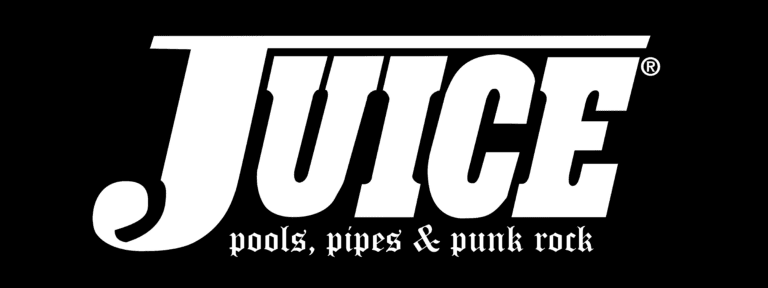


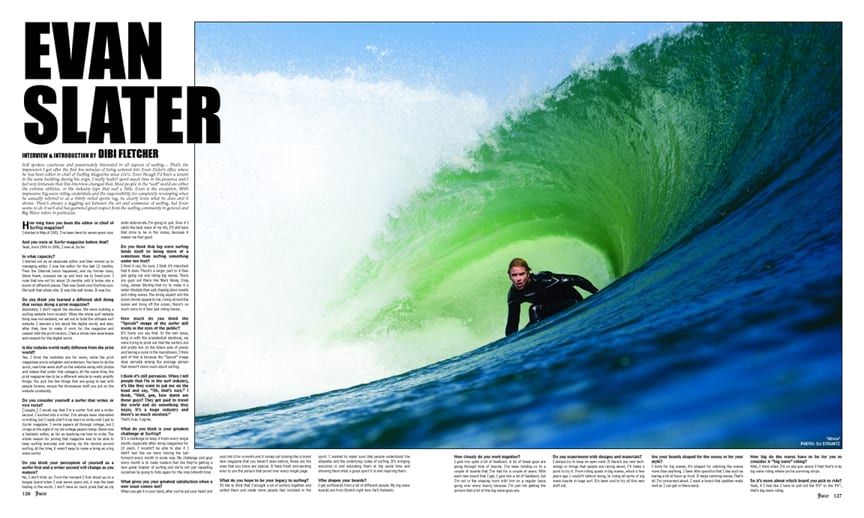
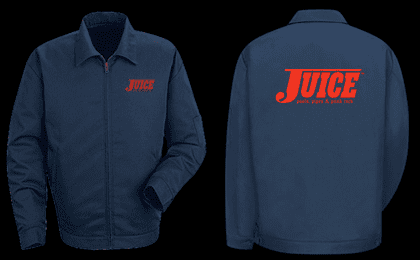
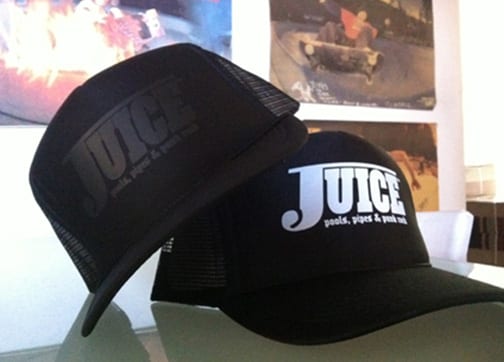





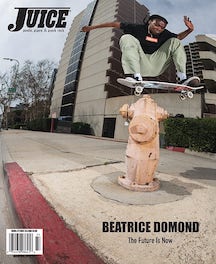
One Response
You went out to the channel islands with my nephew on my Father’s sailboat as a teen to surf the waves at the islands off Santa Barbra did you not?A storm came up! you would not go down below scared my dad to no end!